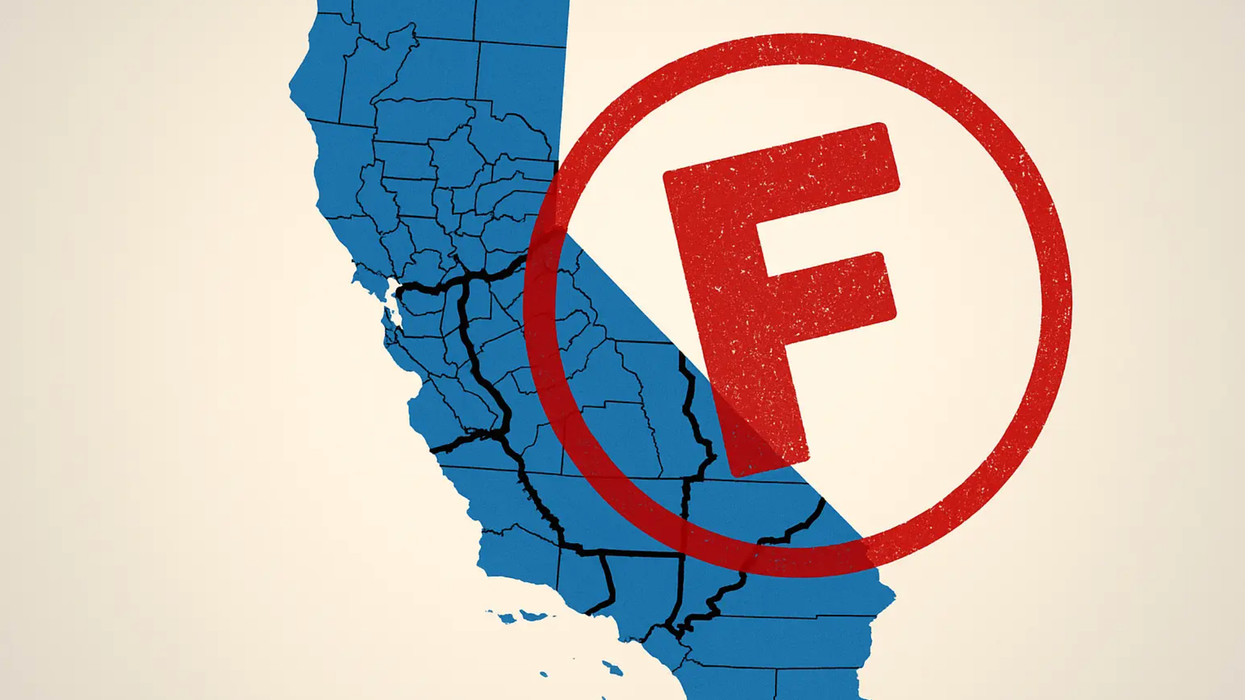Cohen is a retired mathematician and engineer living in Maine.
The term is not one that describes a particular method for conducting elections. Instead, it is a property shared by many different voting systems, all of which encourage elections with several competing candidates. This happens not by way of any special treatment for minor party or independent candidates, however. Instead, balanced voting systems reduce or eliminate a particularly unfair advantage that other voting systems often bestow on the dominant political parties.
A balanced voting system invites voters to show their opposition to a candidate just as easily as it does to show support. Two of the most popular traditional voting methods can readily be transformed into a balanced system — and help break the current red vs. blue duopoly.
The first is plurality voting. This is the system most familiar to Americans because we use it for nearly all of our elections. The voter is allowed to cast a ballot in favor of one, and only one, candidate. And the candidate (almost always a Republican or a Democrat) who gets the most supporting votes is declared the winner.
The balanced version of this system still limits a voter to expressing an opinion about just one candidate, but the voter may express either support or opposition to that candidate. Under this balanced plurality voting system, the winner is the candidate with the largest net number of votes. That net is calculated by subtracting the votes in opposition to the candidate from the votes in favor.
A switch from old-school plurality voting to this balanced alternative could create realistic prospects for the winner to be from a minor party or independent of any party. What would be needed is enough voters loyal to one major party to cast their single votes in opposition to the other major party's nominee. While there is no guarantee this would happen in many or even most elections, surely it would occur in some contests, putting into question the voter's belief that only Democrats or Republicans can possibly win.
The second example is approval voting. A voter is not restricted to choosing a single candidate but instead may cast affirmative ballots for as many different people they could support in each office.
The balanced version of this system, similar to the one described first, allows the voter to specify either support or opposition — but this time they mark support or oppose next to as many names as they choose. A typical voter may decide to indicate support for a few candidates, opposition to several others but indicate no preference for the rest. And the winner, as before, is the candidate with the largest number of positive votes after all the negative votes are subtracted.
These are only two of many possible balanced systems. But the balanced approval version offers an especially clear and interesting example of an avenue for ending the dominance of any two-party duopoly. So long as there are two major parties of roughly the same size — as a polarized electorate naturally tends to be — the net vote for each of their candidates will be reduced to close to zero.
A GOP candidate for Congress in a balanced approval vote contest, for example, could reasonably be expected to receive roughly the same number of opposition votes from Democrats as support votes from Republicans. And for the same reason the Democratic candidate would likewise be likely to come up with a quite small net vote.
With the additional flexibility that a balanced approval system offers to the electorate, victory by one of the two major-party candidates will no longer be certain. Triumph by any outsider — one whose candidacy drew much more favorable sentiment than antagonism — would be a very viable outcome. And so the very notion of "the other party" would likely become a confusing and obsolete concept.
By ignoring opposition and counting only support, our current system, simple approval voting and a leading alternative — ranked-choice voting — all actually perpetuate polarization. In contrast, the adoption of balanced approval voting would clearly make such a polarized electorate unstable and ultimately unsustainable.
Today's Republicans and Democrats, whose appeal is often centered on perceived electability, would become vulnerable to candidates with appealing ideas and perceived competence. Others, who campaign in search only of the passionate pluralities on either the far right and far left, would get bedeviled by competitors campaigning near the center in hopes of building consensus support without engendering hardened opposition.
As a bonus, the divisive tactics of politicians, such as costly negative advertising, that generate enemies along with friends will tend to backfire.
Balanced approval voting is not faultless, however. Ironically, its greatest potential difficulty accompanies its greatest virtue. Adoption would naturally lead to campaigns with plenty of candidates in active competition, which sounds like a great thing. The problem is that there's a limit to a voter's patience in conscientiously studying the flaws and benefits of everyone in a large field of candidates.
That consideration is what motivated my invention of a couple other systems, balanced ration voting and balanced randomized voting, which provide ways to limit the number of candidates a voter has to consider while still collecting a meaningful reading on voter preferences.
So, there are many options for taking power over election outcomes from Republicans and Democrats and putting it in the hands of the people. It's long past time we tried one.



















